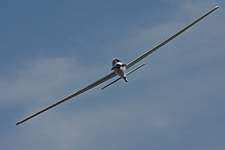|
|
 |
 |
 |
 |
 |
 |
 |
 |
 |
 |
 |
 |
 |
 |
 |
 |
 |
 |
 |
|
 |
 |
|
Using Unmanned Aerial Vehicles for Forest Fire Detection and Management

|
|
|
Unmanned systems can improve performance, save cost, and reduce risks. By 2020, the global unmanned
systems market will reach 105 billion dollars. Canada is the 5th largest Unmanned Aerial Vehicles (UAVs)
producer. Currently, it costs about \$1,500 to \$2,000 per hour to operate a manned helicopter for emergency
response. UAVs can be used in hazardous environments to replace manned aircrafts. Both the risks and the
operating cost can be dramatically reduced. UAVs can be used for search and rescue, oil and gas security, fire
detection and management, pollution management, land mapping, endangered species protection, law
enforcement, burned area assessment, and so on. UAVs have gathered a wealth of interest for the potential
advantages in information gathering for forest fires. Fire-fighters are deployed into the wilderness to combat
the flames. These men and women risk their health and lives in the line of duty. UAVs can reduce the risks
with lower costs. Real-time data collected by UAVs could dramatically impact the modeling and analysis of
critical, episodic, rapidly evolving, and localized environmental phenomena of forest fires.
The UNB research team will investigate innovative and intelligent
algorithms for navigation control, collision avoidance, sensor fusion, and data analysis. At the scene of a forest
fire, timely information is critical for managing forest fires. In order to avoid greater catastrophes, we will
investigate new technologies to rapidly gather information to contain forest fires.
|
|
 |
 | |
|